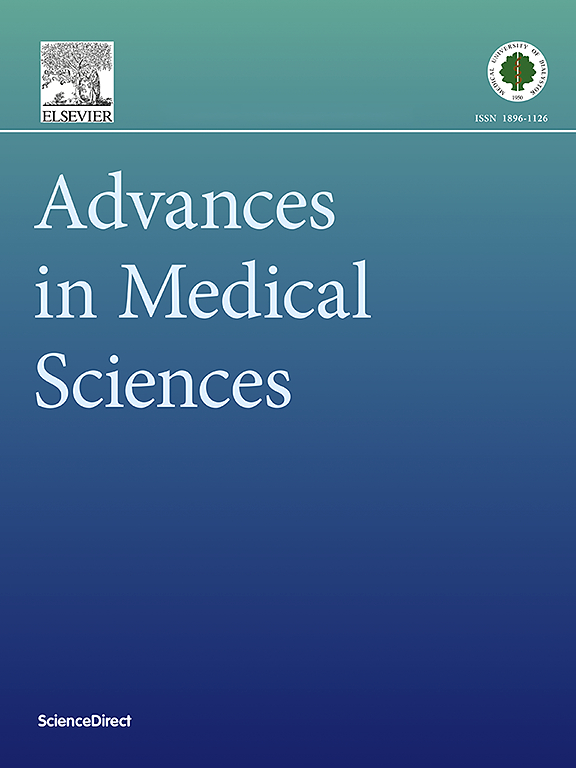Comprehensive assessment of triclosan-induced toxicity: impacts on zebrafish development, mammalian cell viability and microbial activity
IF 2.6
4区 医学
Q3 MEDICINE, RESEARCH & EXPERIMENTAL
引用次数: 0
Abstract
Purpose
The aim of the study was to evaluate the toxicity of triclosan in the Danio rerio model and mammalian cells, as well as to assess its antimicrobial and antibiofilm activity against selected bacterial pathogens.
Methods
Triclosan toxicity was assessed in Danio rerio embryos in accordance with OECD Test Guideline 236: Fish Embryo Acute Toxicity (FET) Test. Cytotoxicity was evaluated in vitro using the MTT assay on human dermal fibroblasts (BJ) and rat cardiomyoblasts (H9c2). Antimicrobial activity was assessed via broth microdilution method following EUCAST guidelines and antibiofilm effects were evaluated through minimum biofilm inhibitory concentration (MBIC) assays for each tested strain.
Results
Triclosan exhibited toxicity towards Danio rerio, reducing their survival rate, heart rate, and locomotor activity. In vitro tests revealed cytotoxicity (LC50 = 28.44 μg/mL for BJ cells and 25.36 μg/mL for H9c2 cells). Antimicrobial tests demonstrated MIC values ranging from 0.24 μg/mL (Lactobacillus acidophilus) to 3.9 μg/mL (Enterococcus faecalis), with corresponding MBC values up to 7.8 μg/mL. MBIC values ranged from 0.03 to 0.12 μg/mL, confirming potent antibiofilm activity.
Conclusions
Triclosan demonstrates high antimicrobial efficacy and inhibits bacterial biofilm formation. However, its toxicity towards aquatic organisms, including Danio rerio, and its cytotoxic effects on mammalian cells raise concerns.
三氯生毒性的综合评估:对斑马鱼发育、哺乳动物细胞活力和微生物活性的影响。
目的:研究三氯生对小鼠模型和哺乳动物细胞的毒性,并评价其对选定病原菌的抑菌活性和抗生物膜活性。方法:根据OECD试验指南236:鱼类胚胎急性毒性试验,对三氯生对达尼罗胚胎的毒性进行评估。采用MTT法对人真皮成纤维细胞(BJ)和大鼠成心肌细胞(H9c2)进行体外细胞毒性评价。根据EUCAST指南,采用肉汤微量稀释法评估抗菌活性,并通过最低生物膜抑制浓度(MBIC)测定每个被试菌株的抗菌效果。结果:三氯生对斑马鱼有毒性作用,降低斑马鱼的存活率、心率和运动能力。体外毒性实验显示,BJ细胞LC50为28.44 μg/mL, H9c2细胞LC50为25.36 μg/mL。抗菌试验表明MIC值为0.24 μg/mL(嗜酸乳杆菌)至3.9 μg/mL(粪肠球菌),相应的MBC值高达7.8 μg/mL。MBIC值在0.03 ~ 0.12 μg/mL之间,证实了有效的抗菌膜活性。结论:三氯生抗菌效果好,可抑制细菌生物膜的形成。然而,其对水生生物的毒性,包括达尼奥·雷里奥,及其对哺乳动物细胞的细胞毒性作用引起了人们的关注。
本文章由计算机程序翻译,如有差异,请以英文原文为准。
求助全文
约1分钟内获得全文
求助全文
来源期刊

Advances in medical sciences
医学-医学:研究与实验
CiteScore
5.00
自引率
0.00%
发文量
53
审稿时长
25 days
期刊介绍:
Advances in Medical Sciences is an international, peer-reviewed journal that welcomes original research articles and reviews on current advances in life sciences, preclinical and clinical medicine, and related disciplines.
The Journal’s primary aim is to make every effort to contribute to progress in medical sciences. The strive is to bridge laboratory and clinical settings with cutting edge research findings and new developments.
Advances in Medical Sciences publishes articles which bring novel insights into diagnostic and molecular imaging, offering essential prior knowledge for diagnosis and treatment indispensable in all areas of medical sciences. It also publishes articles on pathological sciences giving foundation knowledge on the overall study of human diseases. Through its publications Advances in Medical Sciences also stresses the importance of pharmaceutical sciences as a rapidly and ever expanding area of research on drug design, development, action and evaluation contributing significantly to a variety of scientific disciplines.
The journal welcomes submissions from the following disciplines:
General and internal medicine,
Cancer research,
Genetics,
Endocrinology,
Gastroenterology,
Cardiology and Cardiovascular Medicine,
Immunology and Allergy,
Pathology and Forensic Medicine,
Cell and molecular Biology,
Haematology,
Biochemistry,
Clinical and Experimental Pathology.
 求助内容:
求助内容: 应助结果提醒方式:
应助结果提醒方式:


